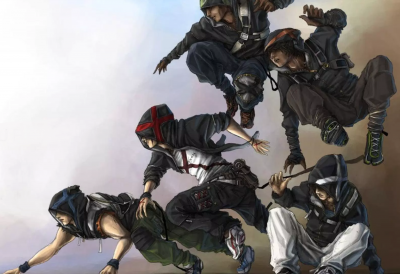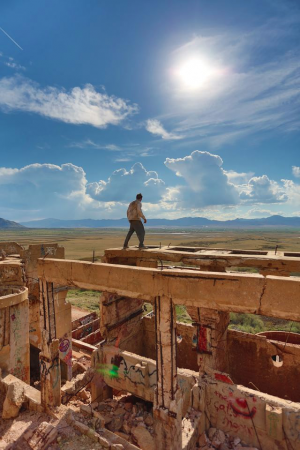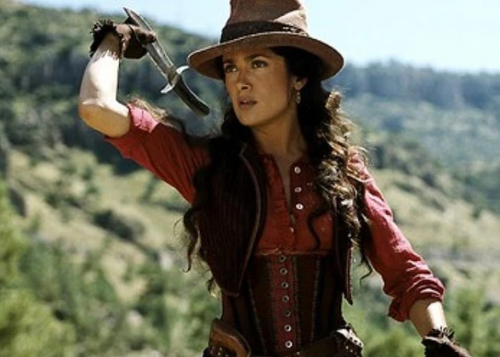Athletics
Contents
Athletics
Athletics encompasses your ability to engage in physical activities such as swimming, climbing, jumping or other physical exertion, be it during a relatively formal sport or simply in the course of an active life. Athletic feats that are directly related to combat are encompassed in Brawl, Dodge, Melee and other combat Skills, except in the case of thrown weapons.
As a broad category of physical training; from rock climbing to sailing. The Athletics Skill can be applied to any action that requires prolonged physical exertion or that demands considerable agility or hand-eye coordination. Examples include climbing a high wall, marching long distances and leaping between rooftops. In combat, it is combined with Dexterity to determine the accuracy of thrown weapons.
- Possessed by: Athletes, Clippers, survivalists, and combat trainers
- Used for: Acrobatics, Boating, Bow, Chases, Climbing, Contortionist, Dancing, Dig, Endurance, Equestrian, Exercise, Flee, Gymnastics, Hiking, Ice Skating, Juggling, Jumping, Leaping, Lifting, Long Distance Running, Parkour, Pursuit, Scrambling, Sex, Sprinting, Swimming, Tai Chi, Throwing, Thrown Objects, Tumbling, Weight Lifting, Weight Training...
- Specialties: Acrobatics, Climbing, Long-Distance Running, Sprinting, Swimming, and Throwing
- General Roll Results
- Success: Your character accomplishes the action as planned. His throw hits the mark. He gains on the fleeing, shadowy figure. He catches the falling baby.
- Exceptional Success: Your character completes the attempted action with greater efficiency or power than anticipated. A masterful feat of balance and agility makes a rock-climbing attempt much swifter and smoother than expected. He catches the falling baby and her loose pacifier.
- Failure: Your character fails to accomplish the attempted action. His throw misses the mark. He doesn't make it to the far rooftop. In the case of an extended physical action such as climbing or long-distance running, he doesn't lose ground but does not make any headway, either.
- Dramatic Failure: The effort not only fails, but your character injures himself. It might be a sprained muscle or ligament, which inflicts a single point of bashing damage. Risky efforts such as climbing up the side of a building or swimming a long distance can have severe repercussions.
Climbing
Climbing an object requires a number of successes in an instant or extended action. Your character can climb 10 feet with each success rolled. Objects that are 10 feet or less in height can be climbed as an instant action. Rolls may be modified based on the availability of hand- and footholds, sheerness or slipperiness of the slope, and wind conditions, all at the Storyteller's discretion. By the same token, if the character chooses to take his time and pick his way carefully up the incline, each minute added to the roll provides a +1 modifier, to a maximum of +3. Thus, if a character takes his time and each roll represents three minutes of effort instead of one, a +2 modifier is added to each roll.
- Dice Pool: Strength + Athletics + (Equipment)
- Suggested Equipment: Nylon rope (+1), climbing cleats (+1), grappling hook (+2), pitons and hammer (+3)
- Possible Penalties: Lack of tools (-1 to -5), bad weather (-1 to -3), sheer slope (-1), lack of handholds (-3).
- General Roll Results
- Success: Your character reaches the top of the object he wishes to climb (if performed as an instant action), or makes continued headway to the top (in an extended action).
- Exceptional Success: Your character reaches the top with time and energy to spare. If successes gained exceed the amount required to climb the object (whether performed as an instant action or exceeding the total required for an extended action), your character may attempt another instant action at the top, such.
- Failure: Your character doesn't make any headway on his attempted climb. He doesn't lose altitude, but he doesn't gain any, either.
- Dramatic Failure: Your character has lost his grip or footing and falls. It could be fatal depending on the height involved.
Foot Chase
Everyone loves a chase scene! It is the reason action movies always seem to have at least one. Not to mention all the video games that circulate the idea of running, being chased and general naughtiness that make a mint in the industry. A chase is a matter of endurance, reflexes and fleetness of foot. Roll Stamina + Athletics for each participant.
- Dice Pool: Stamina + Athletics + Equipment versus Stamina + Athletics + Equipment. The fleeing character must accumulate Successes equal to pursuer's Speed to escape and the pursuing character must accumulate more successes in any given Turn to catch fleeing character.
Jumping
A character can jump one foot vertically for each success gained on a jumping roll. In a standing broad jump, a character can cross two feet per success rolled. In a running jump, a character can cross a number of feet equal to her Size + four more feet per success rolled. So, if a person who's Size 5 gets three successes in a running jump, she travels 17 feet. In order to make a running jump, a character must be able to run a distance of at least 10 feet. If space is limited, every two feet (rounding up) short of 10 imposes a -1 penalty on the Strength + Athletics roll. So, if a character who wants to make jump needs at least 10 feet in which to get a running start, but she has only five feet with which to work, the roll suffers a -3 penalty. Before jumping, a character may attempt to gauge the distance and her chances of success before committing. Roll Intelligence + Composure. If the roll is successful, you learn the number of successes needed to make the jump and decide if it's worth the risk. You may also learn what penalties are imposed by having insufficient space to get a proper running start.
- Dice Pool: Strength + Athletics + Equipment
- Suggested Equipment: Running shoes (+1), ramp (+1), springboard (+2), vaulting pole (+3).
- Possible Penalties: Slippery conditions (-1), bad weather (-1 to -3), difficult terrain (-1 to -3), strong wind (-2), high heels (-5)
- General Roll Results
- Dramatic Failure: The task not only fails but your character loses her balance. Perhaps she trips on a piece of debris or catches a part of her clothing on a branch or jagged rock. Instead of jumping, she hits the ground and suffers a bashing wound if it was a vertical jump.
- Failure: Your character doesn't achieve any significant distance at all -- she jumps too early, has a false start or loses her nerve. She gains a few inches vertically or about a foot horizontally, which could also mean a fall.
- Success: Your character leaps a number of feet based on the successes rolled.
- Exceptional Success: Your character leaps an impressive distance. If successes gained exceed the amount required to make the jump, your character may attempt an another instant action in the air (say, firing a shot) or upon landing (maybe running up to her Speed), at the Storyteller's discretion.
Throwing
Throwing an object can be a brute-force physical act or a combination of grace and hand-eye coordination to hit a distant target. Your character can throw a non-aerodynamic object (such as a clay pot or tire) a distance in yards equal to his Strength + Dexterity + Athletics, minus the object's Size. The result is considered short range. Medium range is double that number, and long range is twice medium range. So, a character with 4 Strength, 3 Dexterity and 2 Athletics can throw a tire with 2 Size a short range of seven yards, a medium range of 14 yards and a long range of 28 yards. Aerodynamic objects such as footballs and spears can be thrown double those distances. Thus, the same character who throws a football (Size 1) has a short range of 16 yards, a medium range of 32 yards and a long range of 64 yards. An object with a Size that equals or exceeds your character's Strength simply can't be thrown far enough to constitute range, even if it's an aerodynamic item. It's simply too heavy or bulky to be thrown. While the distance that an item can be thrown is relatively fixed, your character's accuracy is rolled: Dexterity + Athletics + equipment. Weapons such as knives, spears and rocks, however, confer their Damage ratings as bonuses when thrown. Mundane items such as baseballs or footballs can be thrown to hit and hurt (probably unsuspecting) targets, too. These items typically confer a +1 bonus and do bashing damage. Modifiers to hit targets are -2 at medium and -4 at long range. By no means is long range the limit to which an item can be hurled. Your character could throw it with everything he has and achieve greater distance -- up to twice long range. Accuracy is forgone, though. If your character tries to throw an object at a target beyond long range, he can still make the attempt. Make a chance roll to determine success, regardless of what your character's dice pool might normally be. Any target that's more than double long range away is considered completely out of range and no throw can hit it.
- • Dice Pool: Dexterity + Athletics + (equipment)
- • Suggested Equipment: See the Damage ratings of thrown weapons.
- • Possible Penalties: Slippery conditions (-1), strong wind (-2), bad weather (-1 to -3).
- General Roll Results
- • Success: Your character hits his intended target. In the case of a thrown weapon, each success inflicts one point of damage.
- • Exceptional Success: The object hits the target with great accuracy and/or force.
- • Failure: The object misses its mark or simply does not make it as far as intended.
- • Dramatic Failure: Your character loses control of the object. If it's large or heavy (Size 4 or greater), he loses his grip and drops it, potentially injuring himself in the process. Smaller objects land wildly off the mark, striking something (or someone) accidentally or overshooting the target entirely.


